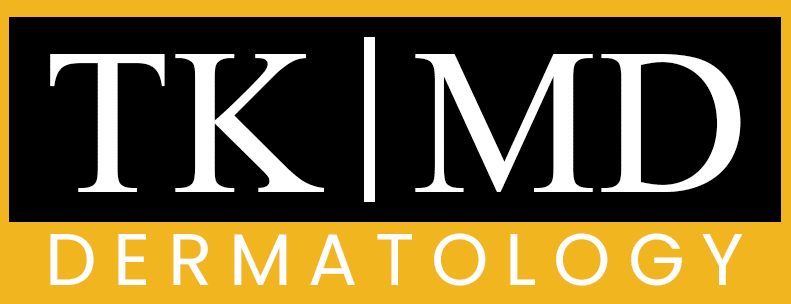When we think about skin conditions, it’s easy to confuse a rash with herpes, especially since both can cause discomfort and irritation. A rash is a broad term that encompasses various skin irritations, which can arise from numerous causes, including allergies, infections, or even environmental factors. On the other hand, herpes specifically refers to a viral infection caused by the herpes simplex virus (HSV), which manifests in distinct ways.
By understanding these differences, we can better navigate our health and seek appropriate care when necessary. Rashes can appear in many forms, such as redness, bumps, or blisters, and they can occur anywhere on the body. They may be itchy or painful, but they are not always indicative of a viral infection.
Herpes, however, typically presents as painful blisters or sores, often around the mouth or genital area. Recognizing these distinctions is crucial for effective treatment and management of symptoms. By being informed about the characteristics of each condition, we can take proactive steps toward our health and well-being.
Key Takeaways
- A rash is a general term for any skin irritation, while herpes is a viral infection that causes sores.
- Symptoms of a rash can include redness, itching, and inflammation, while herpes symptoms include painful blisters and flu-like symptoms.
- Rashes can be caused by allergies, infections, or irritants, while herpes is caused by the herpes simplex virus.
- Rashes are diagnosed through physical examination and sometimes skin tests, while herpes is diagnosed through swab tests or blood tests.
- Treatment options for rashes may include topical creams, antihistamines, or antibiotics, while herpes treatment may involve antiviral medications.
Identifying the symptoms of a rash
When we encounter a rash, it often presents with a variety of symptoms that can help us identify its nature. Common signs include redness, swelling, and itching, which can vary in intensity depending on the underlying cause.
Some rashes may also develop blisters or scales, while others might simply appear as dry patches on the skin.
The location of the rash can provide additional clues; for instance, rashes on the arms or legs may suggest an allergic reaction or contact dermatitis, while those on the torso could indicate a viral infection. In addition to physical symptoms, we should also consider any accompanying sensations. For example, some rashes may cause a burning sensation or tenderness in the affected area.
It’s essential to pay attention to these details, as they can help us differentiate between various types of rashes and guide us toward appropriate treatment options. By being vigilant about our skin health and recognizing these symptoms early on, we can take action to alleviate discomfort and prevent further complications.
Recognizing the symptoms of herpes

Herpes symptoms are often more specific than those of a general rash, making them easier to identify once we know what to look for. The initial outbreak of herpes typically begins with tingling or itching in the affected area, followed by the appearance of small, painful blisters. These blisters can break open and ooze fluid before eventually crusting over and healing.
The sores may be accompanied by flu-like symptoms such as fever, swollen lymph nodes, and body aches during the first outbreak. It’s important to note that herpes can also be asymptomatic, meaning that some individuals may carry the virus without ever experiencing noticeable symptoms. This asymptomatic nature can lead to unintentional transmission to others.
Therefore, understanding the potential signs of herpes is crucial for both our health and the health of those around us. By being aware of these symptoms and their implications, we can make informed decisions about our sexual health and relationships.
Causes of rashes
Rashes can arise from a multitude of causes, making it essential for us to consider various factors when evaluating our skin health. Allergic reactions are among the most common culprits; exposure to certain substances like soaps, detergents, or even specific foods can trigger an immune response that manifests as a rash. Additionally, environmental factors such as heat or humidity can exacerbate existing skin conditions or lead to new rashes altogether.
Infections also play a significant role in the development of rashes. Bacterial infections like impetigo or fungal infections such as ringworm can cause distinct rashes that require targeted treatment. Furthermore, underlying medical conditions like eczema or psoriasis can lead to chronic rashes that require ongoing management.
By understanding these potential causes, we can better assess our symptoms and seek appropriate care when necessary.
Causes of herpes
Herpes is primarily caused by two strains of the herpes simplex virus: HSV-1 and HSV-2. HSV-1 is typically associated with oral herpes, which manifests as cold sores around the mouth, while HSV-2 is more commonly linked to genital herpes. The virus is highly contagious and can be transmitted through direct contact with an infected person’s skin or bodily fluids, even when no visible sores are present.
Certain factors can increase our risk of contracting herpes. Engaging in unprotected sexual activity with an infected partner is a primary risk factor for genital herpes. Additionally, having multiple sexual partners or a weakened immune system can heighten our susceptibility to the virus.
Understanding these causes allows us to take proactive measures in protecting ourselves and our partners from potential transmission.
How rashes are diagnosed

Diagnosing a rash typically involves a thorough examination by a healthcare professional who will assess our medical history and conduct a physical examination of the affected area. They may ask about any recent exposures to allergens or irritants and inquire about accompanying symptoms such as itching or pain. In some cases, they might perform patch testing to identify specific allergens responsible for the rash.
If the rash persists or if there are concerns about an underlying infection, further diagnostic tests may be necessary. These could include skin scrapings or biopsies to analyze skin cells under a microscope. By accurately diagnosing the type of rash we have, healthcare providers can recommend appropriate treatment options tailored to our specific needs.
How herpes is diagnosed
Diagnosing herpes often begins with a healthcare provider taking a detailed medical history and performing a physical examination of any visible sores or blisters. They may ask about our sexual history and any potential exposure to the virus. If we have active lesions, a swab test can be performed to collect fluid from the sores for laboratory analysis, confirming the presence of HSV.
In cases where no visible symptoms are present but there is suspicion of herpes due to previous exposure or recurrent outbreaks, blood tests may be conducted to detect antibodies against the virus. This type of testing can help determine whether we have been infected with HSV-1 or HSV-2 in the past. Understanding how herpes is diagnosed empowers us to seek timely medical attention and receive appropriate care.
Treatment options for rashes
Treatment options for rashes vary widely depending on their underlying cause. For allergic reactions or irritant contact dermatitis, avoiding the offending substance is crucial. Over-the-counter antihistamines or topical corticosteroids may help alleviate itching and inflammation associated with these types of rashes.
In cases where bacterial infections are involved, antibiotics may be prescribed to clear up the infection. For chronic skin conditions like eczema or psoriasis, long-term management strategies may be necessary. This could include prescription topical treatments, phototherapy, or systemic medications aimed at controlling inflammation and preventing flare-ups.
By working closely with healthcare providers to develop an individualized treatment plan, we can effectively manage our rashes and improve our overall skin health.
Treatment options for herpes
While there is no cure for herpes, several treatment options are available to help manage symptoms and reduce outbreaks. Antiviral medications such as acyclovir, valacyclovir, and famciclovir are commonly prescribed to help shorten the duration of outbreaks and lessen their severity. These medications work best when taken at the first sign of an outbreak or as a preventive measure for those with frequent recurrences.
In addition to antiviral therapy, self-care measures can also play a significant role in managing herpes symptoms. Keeping the affected area clean and dry can help prevent secondary infections and promote healing. Applying topical creams or ointments may provide relief from discomfort during outbreaks.
By combining medical treatment with self-care strategies, we can effectively manage herpes and maintain our quality of life.
Preventing rashes and herpes
Preventing rashes often involves taking proactive steps to minimize exposure to known allergens and irritants. This could include using hypoallergenic products, wearing protective clothing when necessary, and practicing good hygiene to reduce the risk of infections. Additionally, maintaining healthy skin through proper moisturizing and sun protection can help prevent certain types of rashes from developing.
When it comes to preventing herpes transmission, practicing safe sex is paramount. Using condoms consistently and correctly can significantly reduce the risk of spreading the virus during sexual activity. Open communication with partners about sexual health is also essential in preventing transmission and ensuring that everyone involved is informed about potential risks.
When to seek medical attention for a rash or suspected herpes
Knowing when to seek medical attention for a rash or suspected herpes is crucial for our health and well-being. If we notice a rash that persists for more than a few days, worsens over time, or is accompanied by severe itching or pain, it’s important to consult a healthcare professional for evaluation and treatment options. Additionally, if we experience any signs of infection such as fever or pus-filled lesions, seeking prompt medical attention is essential.
In cases where we suspect we have contracted herpes—especially if we experience painful sores or blisters—it’s vital to reach out for medical advice as soon as possible.
Early diagnosis and treatment can help manage symptoms effectively and reduce the risk of transmission to others. By being proactive about our health and seeking care when needed, we can take control of our skin conditions and overall well-being.
If you are concerned about skin issues like rashes or herpes, it’s important to seek guidance from a trusted healthcare provider. American Hospital Media City is a leading healthcare provider that can offer expert advice and treatment options for various skin conditions. Additionally, if you are looking for laser skin treatment options or microneedling sessions for acne scars, local experts like Dr. Trisha Khanna can provide personalized care and recommendations. Visit American Hospital Media City or Dr. Trisha Khanna’s website to learn more about your options for addressing skin concerns.
FAQs
What are the symptoms of a herpes rash?
The symptoms of a herpes rash may include pain, itching, and a cluster of small, fluid-filled blisters on the skin. These blisters may break open and form ulcers before crusting over and healing.
How is a herpes rash different from other rashes?
A herpes rash is typically characterized by small, fluid-filled blisters that appear in clusters. It may also be accompanied by pain and itching. Other rashes may present with different characteristics, such as redness, swelling, or a different pattern of blistering.
Can a herpes rash be mistaken for something else?
Yes, a herpes rash can be mistaken for other skin conditions such as allergic reactions, eczema, or other viral rashes. It is important to consult a healthcare professional for an accurate diagnosis.
What causes a herpes rash?
A herpes rash is caused by the herpes simplex virus (HSV). There are two types of HSV: HSV-1, which commonly causes oral herpes (cold sores), and HSV-2, which commonly causes genital herpes. The virus can be transmitted through close personal contact with an infected individual.
How is a herpes rash diagnosed?
A healthcare professional can diagnose a herpes rash through a physical examination and, if necessary, by taking a sample from the affected area for laboratory testing. Blood tests may also be used to detect the presence of the herpes virus.
What are the treatment options for a herpes rash?
Treatment for a herpes rash may include antiviral medications to help reduce the severity and duration of symptoms. It is important to consult a healthcare professional for an accurate diagnosis and appropriate treatment.


